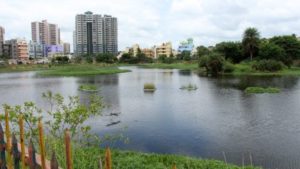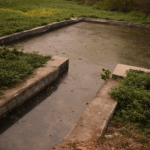Here’s how water is managed in the city
By VISHWANATH SRIKANTAIAH
A recent article on British Broadcasting Corporation (BBC) website listed Bengaluru among the 11 cities that will go out of water soon. The article said: “Local officials in the southern Indian city have been bamboozled by the growth of new property developments following Bangalore’s rise as a technological hub and are struggling to manage the city’s water and sewage systems.
“To make matters worse, the city’s antiquated plumbing needs an urgent upheaval; a report by the national government found that the city loses over half of its drinking water to waste. Like China, India struggles with water pollution and Bangalore is no different: an in-depth inventory of the city’s lakes found that 85% had water that could only be used for irrigation and industrial cooling. Not a single lake had suitable water for drinking or bathing.”
There is no joy in the way things are currently managed in Bengaluru. However, the article is wrong for Bengaluru city and thereby HSR Layout. The article is way too simplistic and does not understand how the city functions vis-à-vis water.
Bengaluru may not run out of water so quickly. Here is why.
Reason 1 – Solid water planning for the city: Bengaluru never has depended on its lakes and tanks formally for its water supply since the commissioning of the Hesarghatta project in 1896. It now gets its waters from one source, the Cauvery river at Torekadinahalli. 18 tmcft of water has been allocated currently to Bengaluru out of the 270 tmcft allotted to Karnataka by the Cauvery water tribunal. This is just 6.7% of Karnataka’s allocated share of the Cauvery water. Another 10 tmcft will be further used by 2023 if all things go well. That is, 28 tmcft out of 270 tmcft, about 11%. This is assured water, even in the worst year of drought in the Cauvery basin because drinking water has first priority over all other water uses, according to the National Water Policy and the State water policy.
All four major reservoirs on the Cauvery stretch, with a live storage capacity of 104.55 tmcft i.e. the Kabini reservoir, the K.R.S. reservoir, the Hemavathi reservoir and the Harangi reservoir act in tandem to provide water security for the city as well as the towns and villages dependent on the Cauvery. The current live storage as on date is 30.48 tmc, at a monthly demand of 1.8 tmcft good enough for 17 months. (Source: https://www.ksndmc.org/Uploads/RL.pdf)
Reason 2 – Rains: Bengaluru has an average rainfall of minimum 800 mm, spread across its 1250 sq.km. of metropolitan area. This translates to 2740 million litres per day of water available as rain (if the 800 mm water for 60 rainy days is spread across 365 days). Even if we imagine the population of Bengaluru metropolitan area to be 2.5 crores, the rainwater itself will come upto 109 litres per head per day. Of course we don’t use all that rainwater currently. Harvesting rainwater has begun slowly but surely across the city, from individual buildings to lakes and aquifers. This year, following heavy rains after a year of severe drought, even wells have filled up.
Reason 3 – Waste water treatment: Waste-water treatment and recycling is picking up, thanks to sustained pressure from civil society and courts. This will ease the burden on fresh water resources.
Reason 4 – Unaccounted water isn’t lost: It is a mistaken notion that the 49% non-revenue water is lost to the citizens completely. A half of it at least is financial losses, meaning the water is getting to people but is either not billed or is ‘stolen’. It is a financial loss for the Bengaluru Water Supply and Sewerage Board (BWSSB) but not a complete loss to the citizenry at large — someone uses the water somewhere.
BWSSB has been well-aware of the losses and is working to reduce the losses to under 16%, with a project that started in 2011. The UFW work, taken up with financial assistance from Japan International Cooperation Agency (JICA) has been completed in many areas of Bengaluru and BWSSB has termed it a success.
This apart, the physical losses caused by leakage of pipelines actually recharge groundwater. Most of the doomsday predictions actually do not take into account that the groundwater table is pretty high in the city centre. This is due to the availability of Cauvery water and leakages getting recharged in the ground. This too is broadly extracted as groundwater from wells and bore-wells.
What does Bengaluru need to do? This of course does not mean that we sit on our haunches and believe things to be hunky dory. People of Bengaluru need to do the following to avoid the doomsday totally even in the remote future.
* Push aggressively and quickly for the protection of the catchment forests in Kodagu and Hassan for the tributaries Kabini and Hemavathi as well as the Cauvery to flow freely and unpolluted.
* Clean up our lakes and bring them into play as we have done for Jakkur /Rachenahalli / Puttenahalli/ Kaikondrahalli. Not like Bellandur and Varthur.
* Push for rainwater harvesting across all buildings, old and new, in Bengaluru.
* Treat waste-water to such levels that they can be used to fill lakes and give this lake filling first charge. Surplus treated waste-water can then fill the lakes of the neighbouring dry districts, providing water to farmers for cultivation as well as enhancing bio-diversity in at least 500 lakes and surrounding areas. (This is already being done — the treated waste water goes to Kolar and Chintamani from Bengaluru.)
* Understand and manage aquifers better. Recharge and use them as groundwater banks.
* Push for the pro-poor policy by ensuring universal connection for water and sanitation to all households in Bengaluru.
* Draw up plans to bring water from the Sharavathi reservoir as quickly as possible. A city with a 392 thousand crore economy (annual GDP) and a population of 11 million expected to go upto 20 million deserves to be water secure.
© Oorvani Foundation/Open Media Initiative. Also available online at
citizenmatters.in





